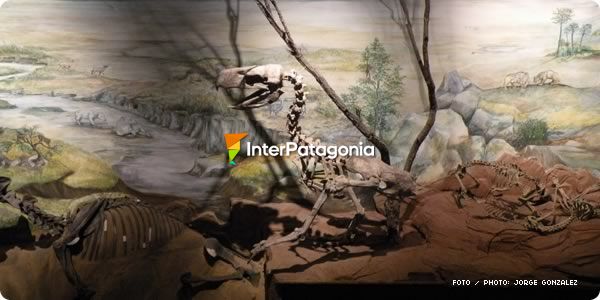Patagonia, Friday, January 02, 2026




- Espaņol
- English
Paleontology
Dinosaurs

They were christened by Sir Richard Owen in 1840, who called them dinosaurs, from the Greek terms “deinos”, which means “large and fearful”, and “sauros”, which means “lizard”.
With the help of fossils, paleontology has discovered much information about the feeding habits of these animals. This is known by the shape and disposition of their jaws and teeth. Furthermore, the general morphology of the dinosaurs' bodies gives evidence of their lifestyle. The carnivores, for instance, would have a big short head and a powerful neck, which would help them tear the meat out of their preys. The herbivores, instead, had a long neck to reach out their food on the tree tops.
According to scientific assertions, as these animals evolved, the proportion between their brain size and their body weight increased and, therefore, their behaviour became more flexible.
Some skin marks show a dry, hard and squamous surface and their eyes had approximately twice the diameter of the eyes of modern mammals.

Many dinosaur species were oviparous. Sites packed with entire and fragmented shells have been found where colonies are supposed to have nestled. Taking into consideration the mothers' weight, the eggs laid by dinosaurs would be smaller than the birds' but greater in number. The large amount of bones of small dinosaurs found in the nestling colonies implies that the mortality rate among the offspring was very high.
However, there are still many facts that have not been completely clarified. It is very difficult to imagine what sounds they made, how they behaved, how they bred or what color they were. What is more, it is almost impossible to distinguish if a fossil corresponds to a male or a female or if they were hot or cold-blood animals, like reptiles at present. If it was possible to determine this fact, paleontologists would discover if they behaved like modern mammals or like reptiles.

The Survival of the Fittest
Charles Darwin wrote: "There is certainly no more surprising fact on Earth than the extensive and repeated massive extermination of its inhabitants".And our planet has undergone more than one massive extinction. And those extinctions are related to the survival of the fittest, to the natural selection of species and, therefore, to evolution.
And extinction came upon the great fearful lizards too.
Inter Patagonia - Information on paleontology and dinosaurs in Patagonia
© InterPatagonia 2002-2026 Total or partial reproduction forbidden. Derechos de Autor 675245 Ley 11723
© InterPatagonia 2002-2026 Total or partial reproduction forbidden. Derechos de Autor 675245 Ley 11723